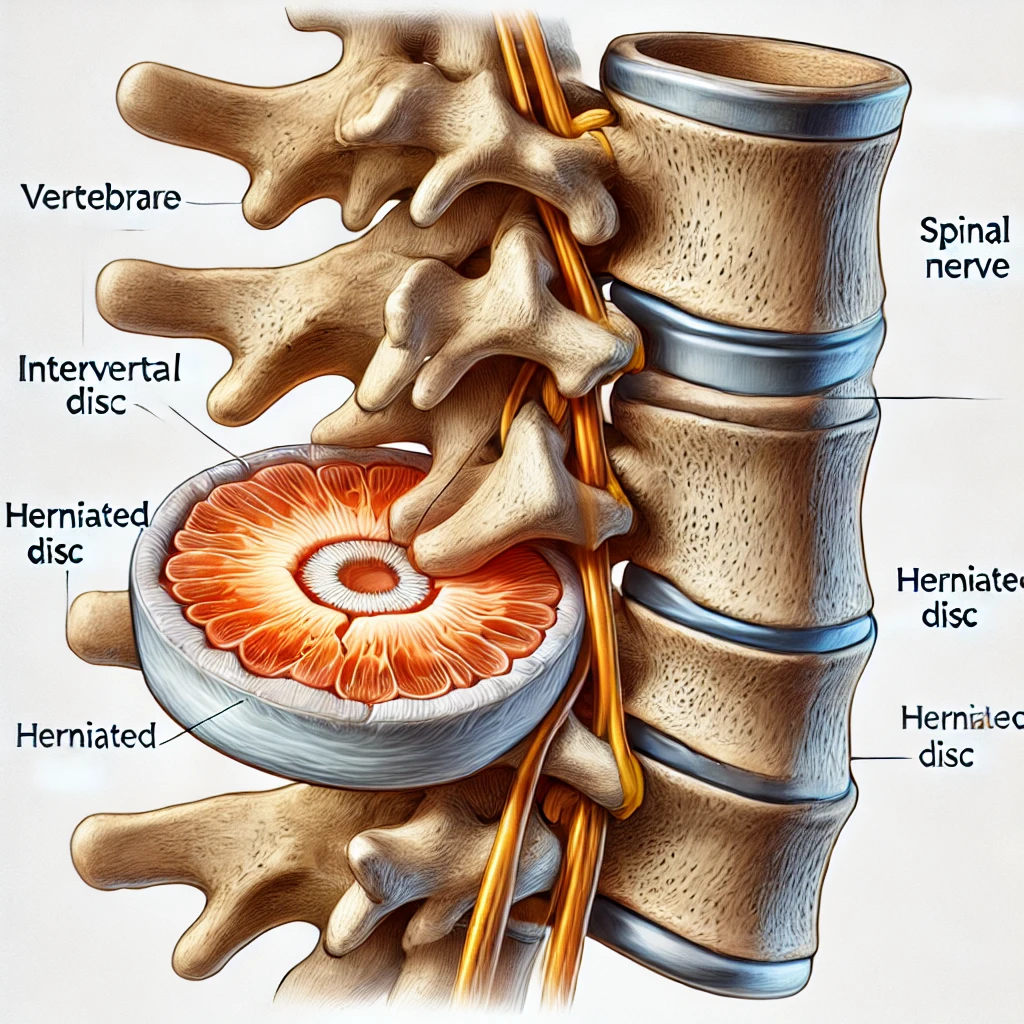Herniated Cervical, Thoracic and Lumbar Disc Disease
What Is Herniated Cervical, Thoracic and Lumbar Disc Disease?
Discs are the shock absorbers that separate the bones or vertebral bodies that comprise the cervical, thoracic and lumbar spine. The discs allow motion between the vertebrae and at the same time maintain the alignment of the spine to protect the spinal cord and nerves that run through the holes in the vertebral bodies. Occasionally, the discs will wear out and a piece may break off producing pressure on the spinal cord or nerves. The proper term for this is a disc herniation although the term “ruptured disc” is often used. Pressure on the nerves causes pain to run down the arms, around the trunk or down the legs depending upon which disc herniates and which nerves are pressed on. This radiating pain is called a radiculopathy. When the pain occurs in the lower extremities it is due to pressure on the nerves that form the sciatic nerve and the patient is said to have sciatica. Pressure from the herniated disc on nerves or the spinal cord can cause numbness, tingling or weakness. Total paralysis is rare but can happen particularly with disc herniations that occur in neck (cervical spine) that cause pressure on the spinal cord.
Herniated Disc Diagnosis
The diagnosis of a herniated disc is usually made by listening to the patient’s complaints and then performing a physical exam on the patient. Traditionalx-rays are usually normal. The diagnosis is confirmed by obtaining an MRI which is a special study that shows the herniated disc and the compression or pressure that it is placing upon the nerves and the spinal cord.
Herniated Disc Treatment
Treatment of herniated discs depends upon how much pressure the broken piece of disc is causing on the spinal cord or nerves and the severity of pain that this results in. If left alone, 80% of patients will improve on their own although this may take two years. During this waiting period, patients with mild or moderate pain may improve with oral medications or an Epidural Steroid Injection (ESI). An ESI is the injection of steroids around the disc herniation to shrink the disc herniation and decrease the inflammation of bruised nerve. Occasionally, herniated discs will cause significant weakness or numbness. In these cases, surgery is often required to remove the ruptured disc thereby removing pressure from the spinal cord or nerves with the goal of improving the weakness and numbness that the patient is experiencing. The surgery may be done through a mini-incision and many patients go home the same day at which time they are up and walking around.

Medical illustration of a herniated disc.



